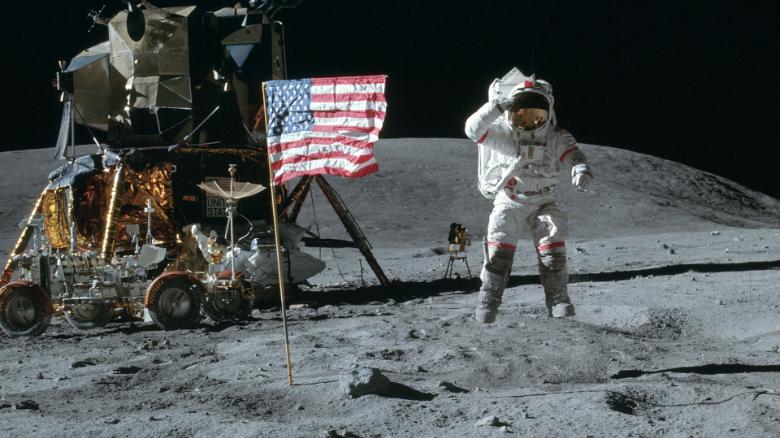- Why Mining Matters
- Jobs
- Safety
- Environment & Operations
- FAQ
- Links
- Fun Stuff

Space is an extreme environment, with tremendous temperature swings, high radiation levels and unique requirements for spacecraft and equipment. Minerals used in space are carefully chosen to ensure they can withstand the challenges they will face and keep astronauts safe.
Space is also a potential new frontier for mining. Most asteroids, planets and the moon are made of the same basic minerals and metals that formed earth 4.5 billion years ago. It has long been believed that mining in space could provide resources for use on earth and to help humankind reach further into our solar system.
Here are some neat facts about minerals in space!

Many of the minerals and metals on earth came from space.
Hydrogen, helium and lithium were the three elements produced in large quantities by the Big Bang 13.8 billion years ago when the universe was created.
Many other minerals are created in the extraordinary heat of supernovas (exploding stars). Supernova cores can reach temperatures of billions of degrees Celsius and the heat can actually turn elements like carbon and oxygen into heavier elements, such as gold, uranium and nickel.
When a supernova explodes, it jettisons its matter into space at some 15,000 to 40,000 kilometers per second. These blasts produce much of the material in the universe that makes up earth and even our bodies. Heavy elements are only produced in supernovas.
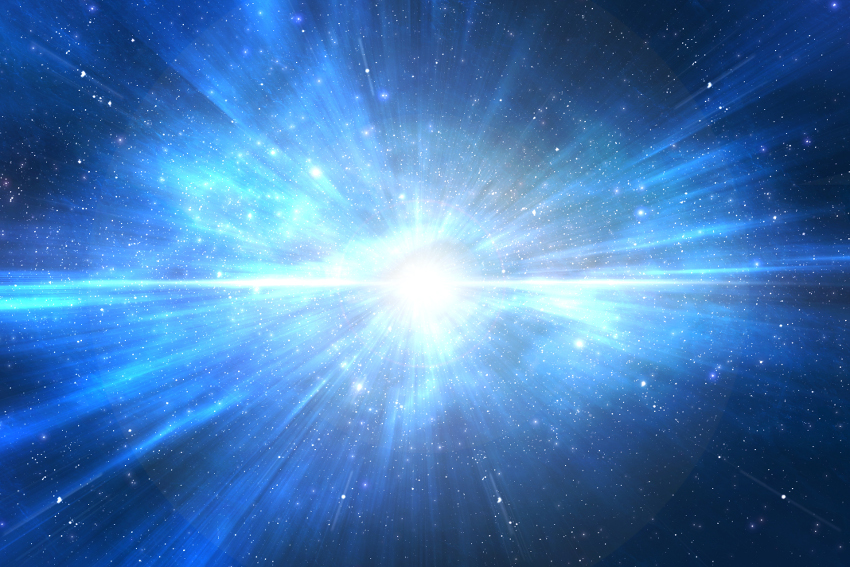
An artist's conception of the Big Bang, how the universe was created 13.8 billion years ago. (Photo credit: ALFRED PASIEKA/SCIENCE PHOTO LIBRARY/GETTY IMAGES)
Minerals like these floated around and crashed into each other over billions of years, creating larger and larger rocks. Grains became rocks, rocks became boulders, boulders became house-sized boulders, and on and on. As rocks got bigger, they eventually generated their own gravity and attracted more rocks. This process ultimately resulted in planet-sized bodies like earth.
As a result, the bodies in our solar system - earth, other planets, asteroids and our moon – are made of many of the same materials. The dust and rocks were mixed together like cookie dough.

Minerals help keep astronauts safe. A thin layer of gold on their visors protects them from solar radiation. Lithium hydroxide helps filter out carbon dioxide and water vapor from spacesuits. A silver and zinc battery powers their spacesuits and steel makes them strong.
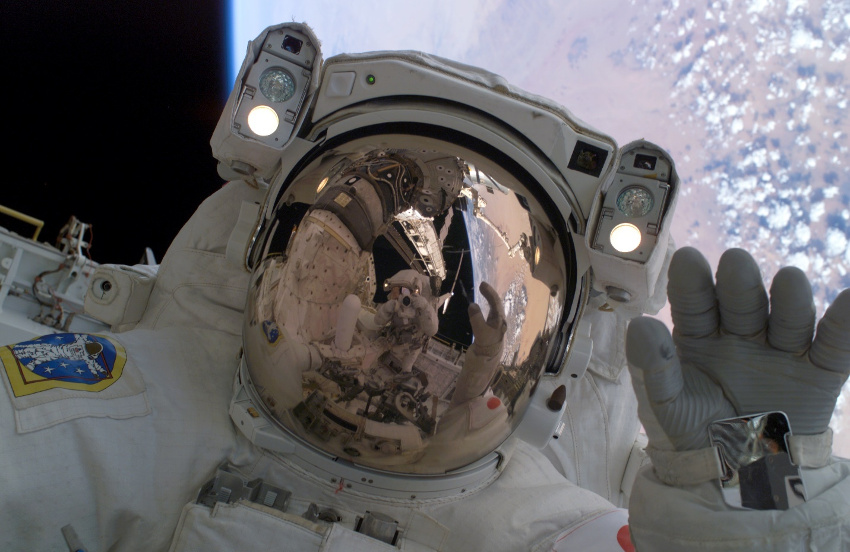
In the vacuum of space, organic lubricants would evaporate ane broken down by radiation so a thin film of gold between moving parts is used instead - the gold molecules slip past one another and act as a lubricant.
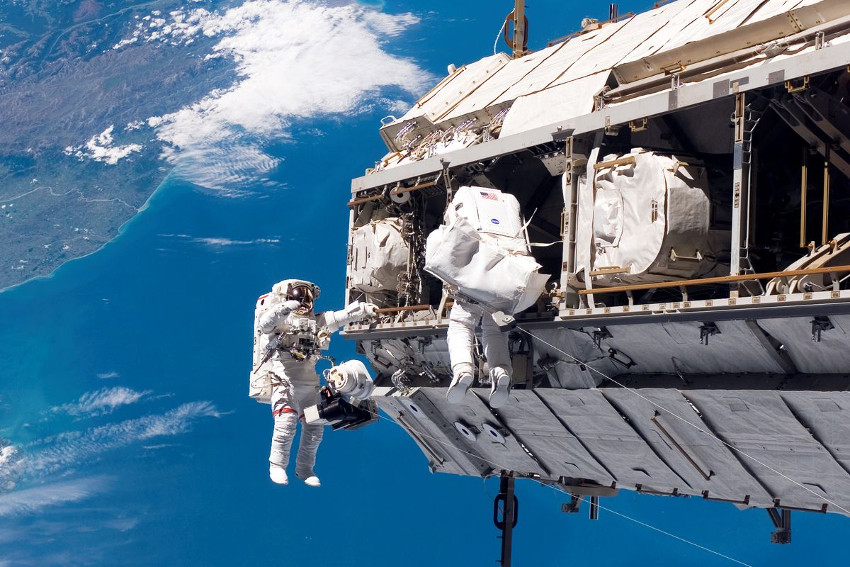
Gold is also used in electronics in space, just as it is on earth. Gold is incredibly soft and malleable - an ounce of gold can be turned into wire 80 kilometres long! It also does not tarnish and it’s an excellent conductor of electricity.
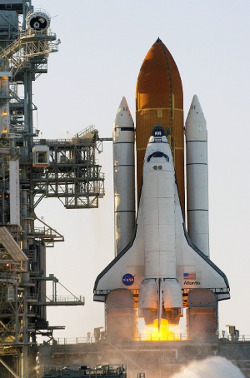
Spacecraft parts have gold-coated polyester film that reflects infrared radiation and helps stabilize the temperature of the spacecraft. Without this coating, dark-colored parts of the spacecraft would absorb too much heat.
Titanium is used in spacecraft because it is as strong as steel but 45% lighter. It is often alloyed with other metals such as aluminium, molybdenum and iron. These alloys are incredibly strong and able to withstand the extreme temperatures of space.
Nova Scotia has a titanium deposit.
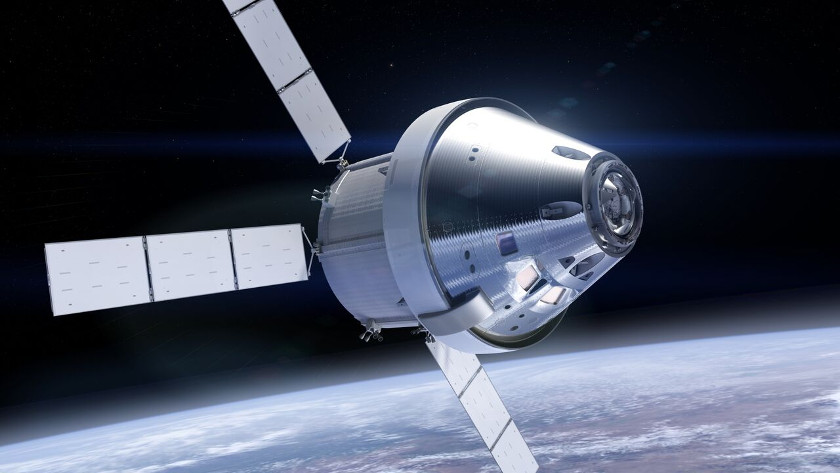

Celestial bodies – including the Moon or near-earth objects (NEOs) such as asteroids – are naturally forming objects found beyond Earth’s atmosphere. Many planets, moons and asteroids contain a rich diversity of substances such as metals, gases and water that could be used as energy sources and means to sustain human life as we venture deeper into space.
The mining of celestial bodies and the use of space resources has gone from science fiction to reality.
It is presumed that some asteroids contain iron, nickel or cobalt in sufficient quantity to cover the needs of the Earth for 3,000 years.

NASA and Arizona State University are teaming up to launch a future mission to an asteroid. The fact-finding mission led by Arizona State University researchers is focused on the ancient, giant metal asteroid 16 Psyche. NASA wants to know whether the asteroid, thought to be made of iron and nickel, could be part of what was an earlier planet perhaps as large as Mars.
While NASA has no plans to bring the massive asteroid home and lacks the technology to mine it, Elkins-Tanton calculates that the iron in 16 Psyche would be worth $10,000 quadrillion. That's right, $10,000 quadrillion, as in 15 more zeros!

A planet the size of Mars crashed into Earth 4.5 billion years ago. The force was so great that it sent materials from Earth and the planet flying into space. Some of this debris stuck together to make the Moon. Earth's gravity held it in our orbit.
The moon is moving away from earth at a rate of about 4 centimetres per year. When the earth and moon formed 4.5 billion years ago, the moon was 22,500 kms away. Now it's 402,000 kms away. Exploring for minerals – on earth or in space! – requires understanding how earth and the universe formed and evolve.

Tides caused by the moon's gravity slow the earth's rotation a fraction of a second each century. 4.5 billion years ago when the earth formed, days were 5 hours long, not 24. If you think there aren't enough hours in a day, wait 180 million years - days will be 25 hours long!
We say "the" moon but there are actually 194 moons orbiting planets in our solar system. Jupiter has 79 moons, Saturn has 62… Venus and Mercury don't have any.
Earth is the only planet that has a single moon.

Earth's surface is constantly changed by forces like plate tectonics and erosion so Earth's first rocks are lost to us. But we can learn about Earth's early days by studying the moon since its surface is relatively static. Apollo 11 brought back many moon rocks and dust samples to study. The rocks were as old as 3.7 billion years.
The oldest known Earth rock wasn't found on Earth - it was found on the Moon! The 4 billion year old rock was brought back to earth by Apollo 14 in 1971. It's believed the rock was debris from an asteroid crashing into early earth. The force of the crash sent it flying to the Moon.
As Armstrong and Aldrin descended to the Moon, the Lunar Module's computer system flew off course toward a boulder-strewn crater. Armstrong took over and landed manually in a safe area - 4 miles off target - with less than 30 seconds of fuel left!
In 1968, a year before his Apollo 11 mission, Neil Armstrong almost died in a Lunar Landing Research Vehicle crash. A sensor failed to warn him of a fuel problem. He ejected a split second before it exploded and was back in his office that afternoon.
The Apollo 11 crew studied geology so they would know how to properly collect and document lunar samples. They trained in places similar to the moon like Hawaiian volcanoes and the Grand Canyon. NASA even used TNT to create fake moon craters in Arizona!
